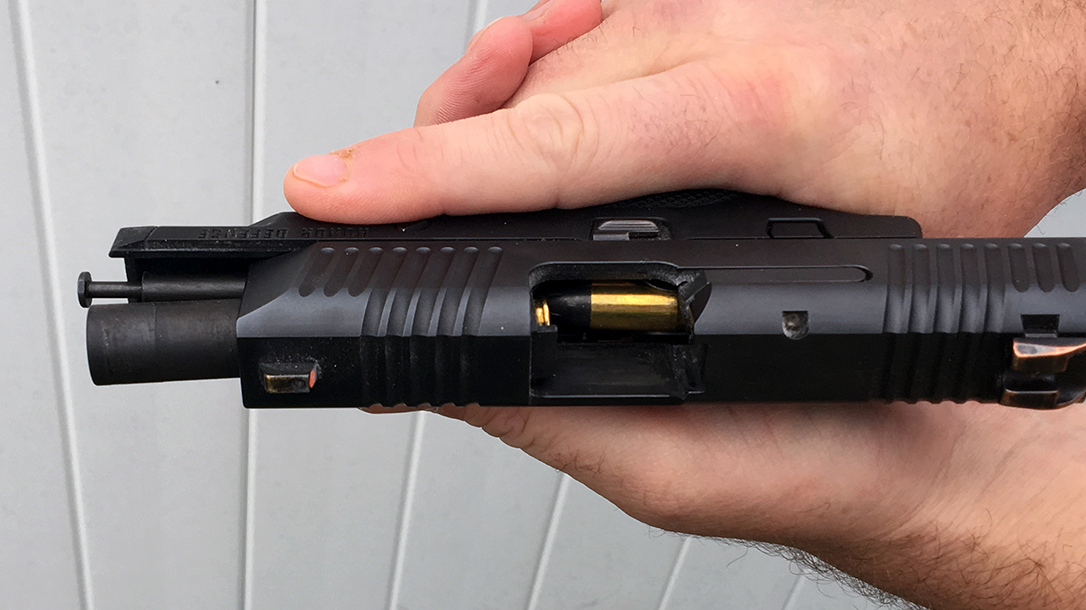A well-maintained pistol should not stop running. However, bad things happen, often at the worst possible time. So, it’s important for self defense shooters to learn how to perform stoppage drills.
Whether the stoppage happens because of a bad round, a bad grip or for any number of other reasons, if it happens during a gunfight, you’re going to lose. Unless, you can quickly get your gun back up and running. This is the whole point of stoppage drills, knowing what to do if the gun doesn’t go bang. Of course, these techniques won’t repair a true malfunction. If that happens, you should transfer to your backup gun or find an escape route.
Advertisement — Continue Reading Below
Stoppage Drills — Stovepipe
The simplest and most common stoppage is the stovepipe. This is when a cartridge case doesn’t eject clear and gets caught as the slide goes forward. A stovepipe can happen for any number of reasons. However, it is also the easiest stoppage to get back into shooting condition.
If you pull the trigger and gun doesn’t fire, the first action to perform is the “tap and rack.” Also called the “tap, rack, bang,” this drill involves “tapping” the magazine and “racking” the slide. Set up the drill by placing a case in the action, aiming at the target and pulling the trigger. When gun doesn’t fire, hit the bottom of the magazine, making sure it is seated and rack the slide to load a round in the chamber. Then, fire at will.
Stoppage Drills — Double Feed
Now the next most common stoppage is the double-feed. This is when there is a round in the chamber and the slide tries to load another. Typically, this happens when the extractor fails to remove an empty case.
Advertisement — Continue Reading Below
Once again, the shooter pulls the trigger and the gun doesn’t fire. First, conduct a tap and rack drill. When this doesn’t get the gun running, strip the magazine from the pistol, but keep the magazine in the support hand. Then, rack the slide several times before inserting the magazine and racking it one more time. At this point, the gun should be ready to shoot.
Not Exactly Training Like You Fight
The best way to conduct stoppage drills is with a partner setting up the issue without telling the shooter. However, you can set perform these drills yourself; you just have to put yourself into the mindset to pull the trigger and act surprised when the gun doesn’t fire.
Now the tap and rack is intended for when a gun doesn’t go bang during a situation, not in training. Sure, you’re setting up to learn a skill that can and should be used if needed. However, if you’re conducting other types of training and the gun doesn’t fire, you should not perform a tap and rack. If the issue is a squid load that sent a bullet part way down the barrel, a second shot could cause a catastrophic failure. However, if you’re in a real situation, run your drills. If neither works, transition to your backup or get out of there.
Advertisement — Continue Reading Below
























